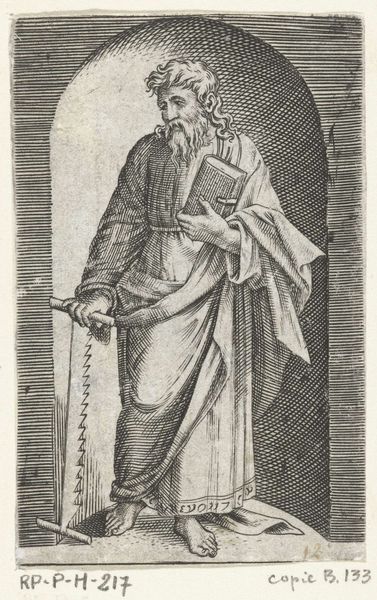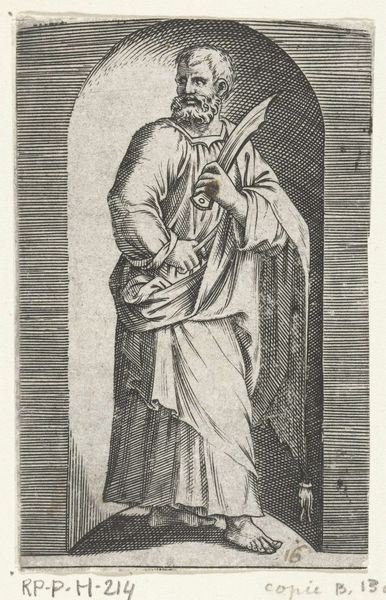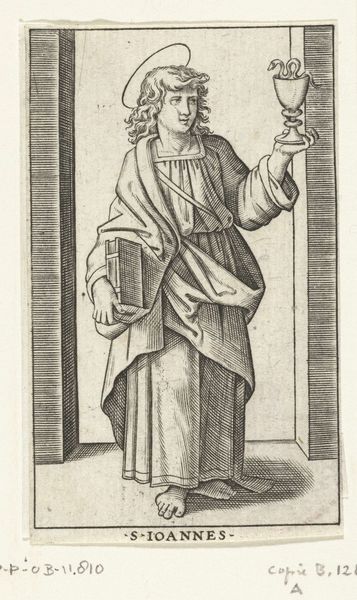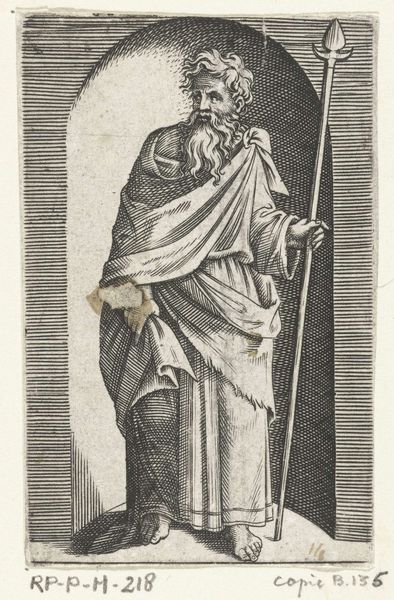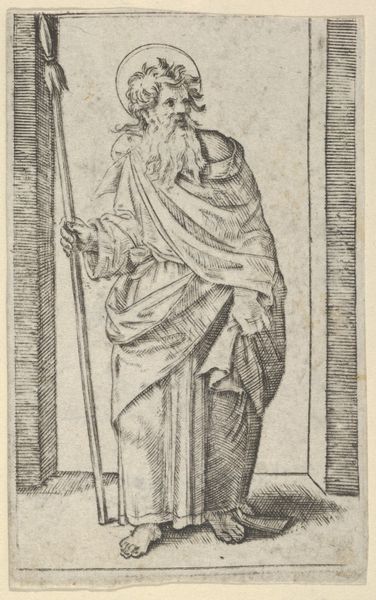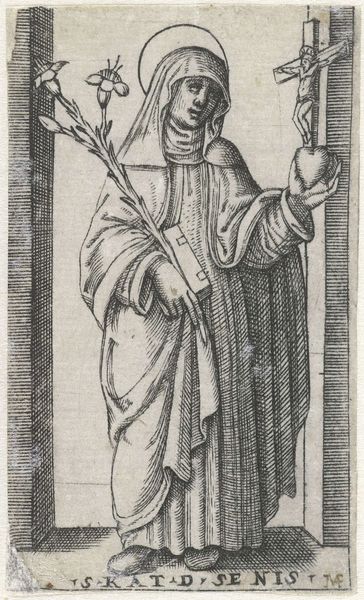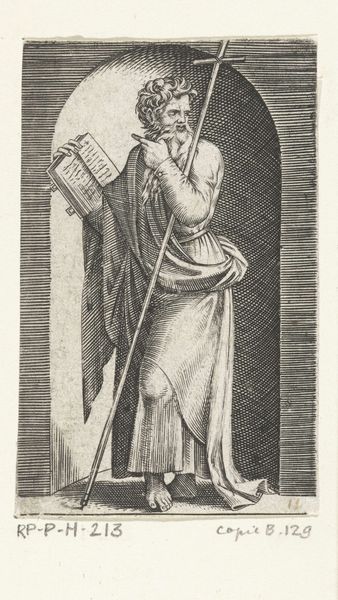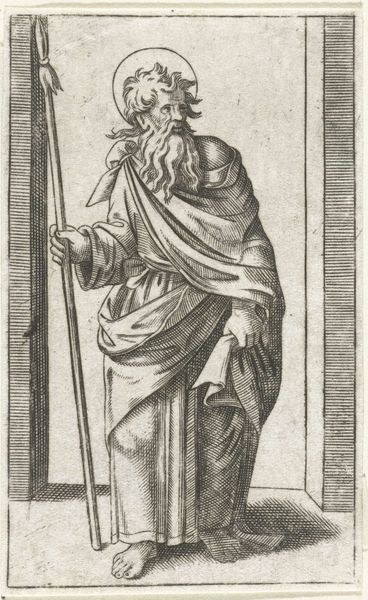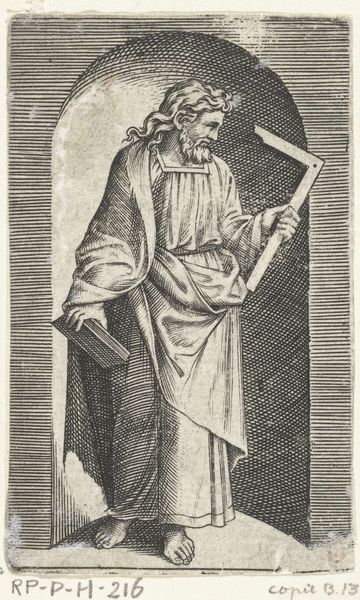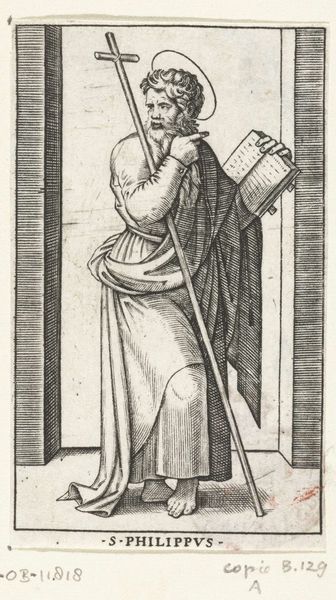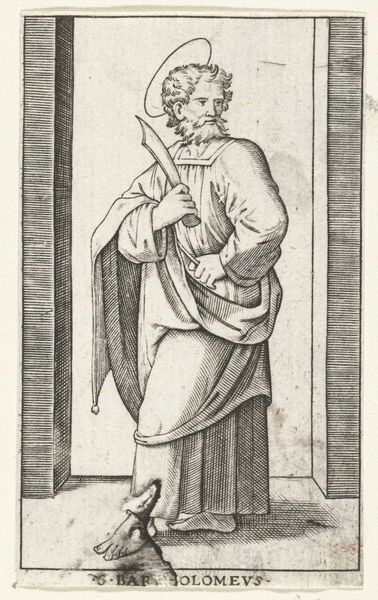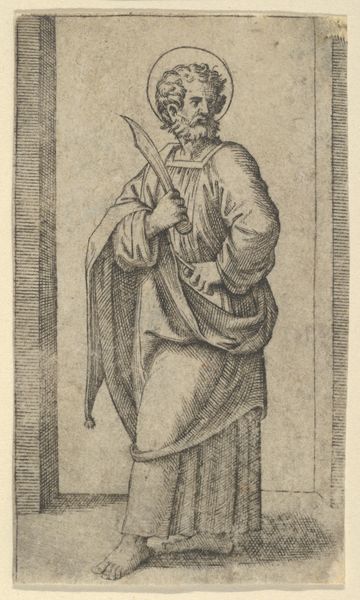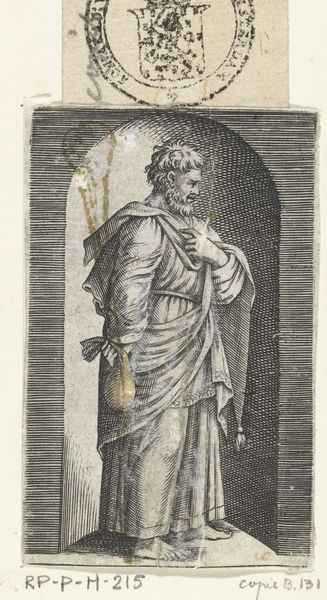
print, engraving
# print
#
figuration
#
11_renaissance
#
history-painting
#
engraving
Dimensions: height 79 mm, width 51 mm
Copyright: Rijks Museum: Open Domain
Curator: Today we're looking at an engraving from the Renaissance, depicting the Apostle John the Evangelist. It was created anonymously sometime between 1517 and 1577. Editor: My first impression is one of understated grace. There’s an incredible stillness and classical balance to it, especially given its monochrome medium. The stark lines create a surprising dynamism in the drapery. Curator: Absolutely. I find it fascinating how artists working within a deeply religious framework began incorporating classical elements into their portrayals of saints. The subject's stance, his draped robes – these nod to Greco-Roman statuary. What impact did those historical resonances have? The print becomes a fascinating study in identity during periods of radical cultural transformation. Editor: Yes, and if you look closely at the fine lines and the way the figure emerges from the background, you begin to understand the level of the engraving mastery. Look at the treatment of light and shadow within the niche, it’s truly a work of refinement. Curator: His gaze seems averted from us, but his hand, holding the chalice, presents it directly. This posture brings into focus questions surrounding performative piety and the Church's presentation of authority, during that tumultuous historical moment of schism and reformation. How do the visuals operate to persuade its beholders? Editor: It's all cleverly choreographed, a dance of symbolism and technique. Look at the use of the linear hatching; the graphic elements function both to define form and imply an ethereal glow around the Apostle. A compelling study in light. Curator: And the serpent emerging from the chalice…such loaded iconography! It really speaks to how intertwined the sacred and profane are, reflecting broader issues surrounding how people grappled with faith, doubt, and the corruption of religious institutions. Editor: Looking at this from a formal perspective, one also cannot deny the sophistication in its spatial illusion despite the simple composition. It stands out by showcasing mastery in simplicity. Curator: I am left pondering over the visual vocabularies that developed across time; how artists both uphold conventions and also challenge our notions of authority, religion, and the relationship between the individual and collective. Editor: And I appreciate again the power of artistic composition in lending immortality to cultural artifacts like this image, the distillation of an entire complex moment into a poised iconic representation.
Comments
No comments
Be the first to comment and join the conversation on the ultimate creative platform.
